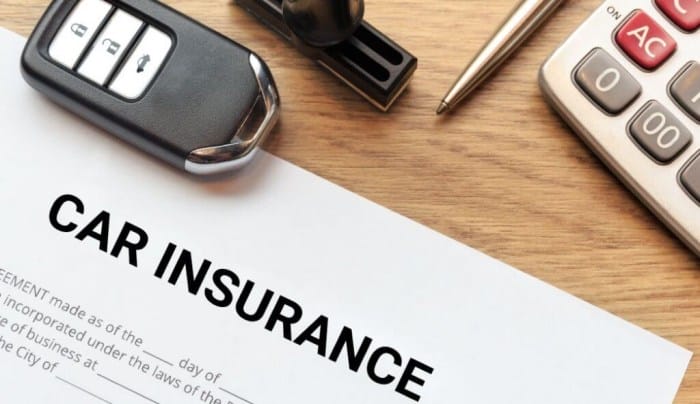Navigating the world of car insurance as a young driver can be daunting. With higher premiums often the norm, finding ways to reduce costs without compromising coverage is essential. This comprehensive guide offers a wealth of tips and strategies to help young drivers secure affordable car insurance rates while maintaining peace of mind on the road.
From cultivating safe driving habits to exploring usage-based insurance programs, this guide delves into the intricacies of car insurance for young drivers. With practical advice and expert insights, you’ll discover how to make informed decisions, take advantage of discounts, and potentially save hundreds of dollars on your insurance premiums.
Driving Habits and Safety

Maintaining a clean driving record is essential for young drivers seeking lower insurance rates. A history of safe driving habits indicates a lower risk profile to insurance companies, leading to potential discounts and lower premiums.
Safe Driving Practices
Adhering to traffic regulations, observing speed limits, and practicing defensive driving techniques can positively impact insurance costs. Avoiding reckless driving, such as speeding, tailgating, or running red lights, demonstrates responsibility and reduces the likelihood of accidents or violations.
Avoiding Traffic Violations and Accidents
Traffic violations and accidents can significantly increase insurance premiums. Young drivers with multiple violations or accidents may face higher rates due to the perceived increased risk. By avoiding these incidents, young drivers can maintain a favorable driving record and potentially qualify for lower insurance costs.
Vehicle Type and Usage

The type of vehicle you drive and how you use it can significantly impact your insurance premiums. Insurance companies consider various factors related to your vehicle and usage patterns when determining your rates.
When selecting a vehicle, consider models with safety features that can help reduce the risk of accidents and lower your insurance costs. These features may include:
Safety Features
- Anti-lock brakes (ABS): ABS prevents wheels from locking during braking, allowing drivers to maintain control and stability.
- Airbags: Airbags provide additional protection in the event of a collision, reducing the risk of serious injuries.
- Electronic stability control (ESC): ESC helps drivers maintain control of their vehicles during turns and slippery conditions, reducing the risk of skidding.
- Lane departure warning systems: These systems alert drivers when they drift out of their lane, helping to prevent accidents.
- Forward collision warning systems: These systems warn drivers of potential collisions with other vehicles or objects, allowing them to take evasive action.
In addition to safety features, the annual mileage and usage patterns also affect insurance rates. Drivers who travel fewer miles per year and use their vehicles primarily for commuting or personal errands may qualify for lower rates.
Insurance Coverage and Limits

Insurance coverage and limits are crucial factors that determine the cost of car insurance for young drivers. Understanding the different types of coverage available, optional coverage options, and appropriate coverage limits can help young drivers manage their insurance premiums effectively.
The basic types of insurance coverage include:
- Liability Coverage: Covers damages or injuries caused to others and their property in an accident. It includes bodily injury liability and property damage liability.
- Collision Coverage: Covers damages to the insured vehicle in an accident, regardless of who is at fault.
- Comprehensive Coverage: Covers damages to the insured vehicle caused by events other than collisions, such as theft, vandalism, fire, and natural disasters.
Optional coverage options that may increase premiums include:
- Uninsured/Underinsured Motorist Coverage: Covers damages or injuries caused by drivers who do not have insurance or have insufficient insurance.
- Personal Injury Protection (PIP) or Medical Payments Coverage: Covers medical expenses for the insured driver and passengers, regardless of who is at fault in an accident.
- Rental Car Reimbursement Coverage: Covers the cost of renting a car while the insured vehicle is being repaired or replaced.
Choosing appropriate coverage limits is essential to ensure adequate protection without overpaying for insurance. It is important to consider factors such as the value of the insured vehicle, potential liability risks, and personal financial situation.
Discounts and Savings Opportunities
Insurance companies recognize the unique circumstances of young drivers and offer various discounts to help them save money on their premiums. These discounts reward responsible driving habits, safe vehicles, and other factors that indicate a lower risk profile.
To qualify for these discounts, young drivers must meet specific criteria set by the insurance company. Common discounts include:
Good Student Discount
- Description: Rewarding academic achievement, this discount is available to young drivers who maintain a certain GPA or rank in their class.
- Potential Savings: Typically ranges from 5% to 25% off the base premium.
Defensive Driving Course Discount
- Description: Completing an approved defensive driving course demonstrates a commitment to safe driving and can lead to a discount.
- Potential Savings: Usually around 5% to 15% off the base premium.
Multi-Car Discount
- Description: Insuring multiple vehicles with the same company often results in a discount for each policy.
- Potential Savings: Varies depending on the insurance company and the number of vehicles insured, but typically ranges from 5% to 15% per vehicle.
Paid-in-Full Discount
- Description: Paying the entire annual premium upfront instead of making monthly payments can earn a discount.
- Potential Savings: Usually around 5% to 10% off the base premium.
Loyalty Discount
- Description: Remaining with the same insurance company for a certain period, typically three to five years, can result in a loyalty discount.
- Potential Savings: Varies depending on the insurance company and the length of time as a customer, but generally ranges from 5% to 10% off the base premium.
By taking advantage of these discounts and savings opportunities, young drivers can significantly reduce their car insurance premiums and make driving more affordable.
Insurance Shopping and Comparison
In the quest for affordable car insurance, shopping around for quotes is a crucial step. This process enables you to compare rates and coverage options from multiple insurers, ensuring you secure the best deal that suits your needs and budget.
There are various resources available to facilitate insurance comparison. Online platforms like insurance comparison websites and apps allow you to obtain quotes from multiple insurers simultaneously. These platforms typically require you to provide basic information about your vehicle, driving history, and coverage preferences.
Insurance Comparison Resources
- Online Comparison Websites: Websites like The Zebra, NerdWallet, and Insure.com provide comprehensive comparisons of insurance quotes from multiple providers. These platforms offer user-friendly interfaces and allow you to customize your coverage preferences.
- Insurance Aggregators: Aggregators such as AccuQuote and InsuranceQuotes.com gather quotes from various insurers and present them in a standardized format, making it easier to compare coverage options and rates.
- Independent Insurance Agents: Working with an independent agent can provide access to quotes from multiple insurers, allowing you to compare rates and coverage options in one place. Independent agents can also provide personalized advice and guidance based on your specific needs.
Factors to Consider When Comparing Insurance Quotes
When comparing insurance quotes, it’s essential to consider several factors to ensure you make an informed decision.
- Coverage Limits: Carefully review the coverage limits offered by each insurer. Ensure that the limits align with your needs and provide adequate protection in case of an accident or loss.
- Deductible: The deductible is the amount you pay out-of-pocket before your insurance coverage kicks in. Higher deductibles often result in lower premiums, but it’s important to choose a deductible that you can afford to pay in case of a claim.
- Discounts: Many insurers offer discounts for various factors, such as safe driving records, multiple vehicles insured with the same company, or enrolling in paperless billing. Ask about available discounts and take advantage of any that apply to you.
- Customer Service: Consider the reputation of each insurer for customer service. Read reviews and feedback from policyholders to gauge the quality of their claims handling, responsiveness, and overall customer experience.
Bundling Policies and Multi-Car Discounts

For young drivers, combining auto insurance policies with other insurance policies, such as home or renters insurance, can lead to substantial savings. Many insurance companies offer discounts for bundling multiple policies, recognizing the value of customer loyalty and the convenience of managing all insurance needs through a single provider.
Several insurance companies offer multi-car discounts to policyholders who insure multiple vehicles under the same policy. This discount acknowledges the reduced risk associated with insuring multiple vehicles with a single company, as well as the administrative efficiency gained by managing all vehicles’ insurance coverage under one policy.
Potential Savings
The potential savings from bundling policies and availing multi-car discounts can vary depending on the insurance company, the specific policies being bundled, and the number of vehicles insured. However, many insurance companies offer discounts ranging from 5% to 25% for bundling policies and 5% to 15% for insuring multiple vehicles.
These discounts can add up to significant savings over time, especially for young drivers who typically pay higher insurance premiums.
Defensive Driving Courses and Training
Completing defensive driving courses can be a strategic move for young drivers seeking to reduce their insurance premiums. These courses are designed to educate and equip drivers with the skills and knowledge necessary to navigate roads safely and avoid accidents.
By enrolling in and successfully completing accredited defensive driving courses, young drivers can demonstrate their commitment to safe driving practices, potentially leading to lower insurance rates.
Accredited Defensive Driving Courses for Young Drivers
Numerous accredited defensive driving courses cater specifically to young drivers, providing comprehensive training and education on various aspects of road safety. Some notable options include:
- National Safety Council (NSC) Defensive Driving Course: This widely recognized course covers topics such as hazard recognition, risk assessment, and accident prevention techniques.
- AAA Defensive Driving Course: Offered by the American Automobile Association (AAA), this course emphasizes defensive driving strategies, including proper following distance, safe lane changes, and evasive maneuvers.
- Driver’s Edge Defensive Driving Course: Designed for young drivers, this course focuses on developing safe driving habits, including managing distractions, understanding vehicle dynamics, and maintaining control in adverse conditions.
Impact of Defensive Driving Courses on Insurance Rates
Completing defensive driving courses can positively impact insurance rates for young drivers in several ways:
- Reduced Risk Profile: By demonstrating a commitment to safe driving through course completion, young drivers can signal to insurance companies that they are less likely to engage in risky behaviors that could lead to accidents, resulting in lower insurance premiums.
- Insurance Discounts: Many insurance companies offer discounts to drivers who have successfully completed defensive driving courses, recognizing the reduced risk associated with these drivers.
- Improved Driving Skills: The knowledge and skills acquired in defensive driving courses can directly translate into safer driving habits, potentially reducing the likelihood of accidents and subsequent insurance claims.
Usage-Based Insurance Programs

Young drivers can benefit from usage-based insurance (UBI) programs by paying premiums based on their driving habits and mileage. UBI programs utilize technology, such as telematics devices or smartphone apps, to monitor driving behavior, including factors like speed, braking, and acceleration.
Based on this data, insurers can assess risk more accurately and offer personalized rates.
Insurance Companies Offering UBI Programs
Several insurance companies offer UBI programs, including:
- Allstate’s Drivewise program
- Progressive’s Snapshot program
- State Farm’s Drive Safe & Save program
- Liberty Mutual’s RightTrack program
- Metromile’s pay-per-mile program
Potential Savings with UBI Programs
The potential savings through UBI programs vary depending on driving habits and mileage. Generally, safer drivers with lower mileage can save a significant amount on their insurance premiums. For example, Allstate’s Drivewise program claims that drivers can save up to 30% on their car insurance, while Progressive’s Snapshot program estimates savings of up to 10%.
Credit Score and Insurance Rates

A credit score is a numerical representation of a person’s credit history, calculated based on factors such as payment history, debt levels, and credit utilization. It plays a significant role in determining insurance rates, as insurance companies use it to assess the risk of insuring a particular individual.
Factors Affecting Insurance Rates Based on Credit Score
- Higher Credit Score: Individuals with higher credit scores are generally considered to be more responsible and reliable. They are less likely to file insurance claims, leading to lower insurance premiums.
- Lower Credit Score: Individuals with lower credit scores are often perceived as higher-risk drivers. They may have a history of late payments or defaulting on loans, indicating a potential for higher insurance claims. Consequently, they may face higher insurance premiums.
Examples of Credit Score Impact on Insurance Premiums
- A driver with a credit score of 750 or above may receive a 10-20% discount on their insurance premiums compared to someone with a credit score below 650.
- A driver with a credit score below 500 may pay up to 50% more for their insurance coverage than someone with a credit score above 700.
Maintaining a Good Credit Score for Insurance Purposes
Maintaining a good credit score is crucial for securing lower insurance rates. Here are some tips:
- Pay Bills on Time: Always pay your bills, including credit card payments, rent, and utilities, on or before the due date.
- Keep Credit Utilization Low: Avoid maxing out your credit cards. Aim to keep your credit utilization below 30% of your total credit limit.
- Reduce Debt: If you have outstanding debts, create a plan to pay them off systematically.
- Monitor Your Credit Report: Regularly check your credit report for errors or inaccuracies. Dispute any incorrect information promptly.
Telematics Devices and Monitoring

Telematics devices are a game-changer for young drivers seeking affordable insurance rates. These devices track driving behavior, including speed, braking, and cornering, to assess risk and determine insurance premiums.
Progressive, Allstate, and State Farm are among the leading insurance companies that offer telematics-based insurance programs. These programs typically involve installing a device in the car that collects data on driving behavior. The data is then used to calculate a personalized insurance rate based on the driver’s actual driving habits.
Potential Savings
Telematics-based insurance programs can result in significant savings for young drivers. According to a study by the Insurance Institute for Highway Safety, drivers who participated in a telematics program saw an average premium reduction of 15%.
Final Thoughts

In conclusion, reducing car insurance costs for young drivers requires a combination of responsible driving habits, smart vehicle choices, and informed insurance decisions. By following the tips Artikeld in this guide, young drivers can navigate the insurance landscape with confidence, ensuring they have the coverage they need at a price they can afford.
FAQ Summary
Q: Why are car insurance rates higher for young drivers?
A: Young drivers are statistically more likely to be involved in accidents due to less experience and risk-taking behaviors. Insurance companies view them as higher-risk drivers, leading to higher premiums.
Q: How can young drivers improve their driving record?
A: Maintaining a clean driving record is crucial. Avoid traffic violations, accidents, and risky driving behaviors. Consider taking a defensive driving course to demonstrate your commitment to safe driving.
Q: What type of vehicle should young drivers choose to lower insurance costs?
A: Opt for a safer vehicle model with a good safety rating. Consider vehicles with advanced safety features like airbags, anti-lock brakes, and electronic stability control.
Q: How can young drivers find the best insurance rates?
A: Shop around and compare quotes from multiple insurance companies. Consider bundling your auto insurance with other policies like homeowners or renters insurance for potential discounts.
Q: What are usage-based insurance programs, and how can they benefit young drivers?
A: Usage-based insurance programs track driving behavior and adjust premiums accordingly. By demonstrating safe driving habits, young drivers can potentially lower their insurance costs.



